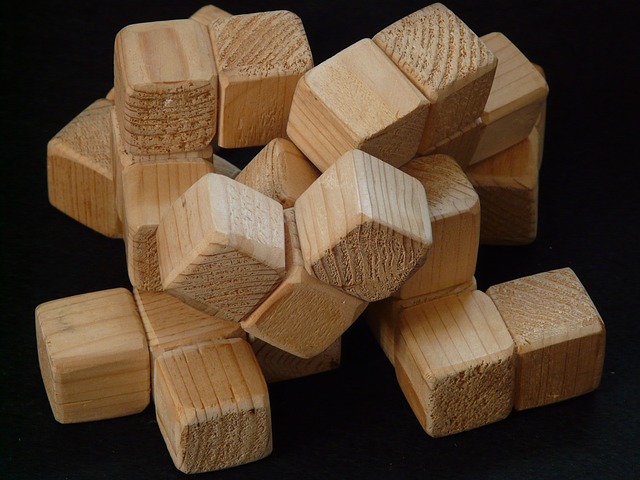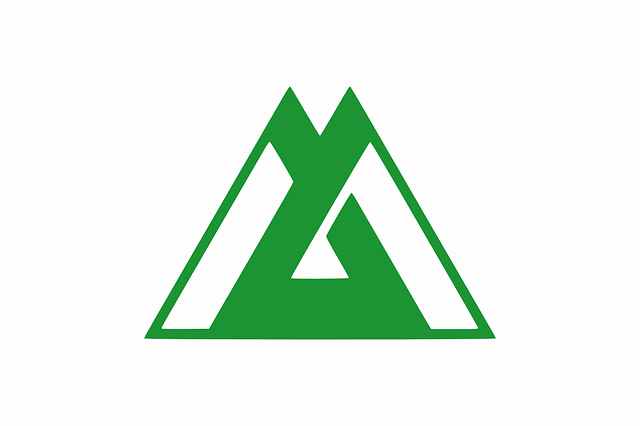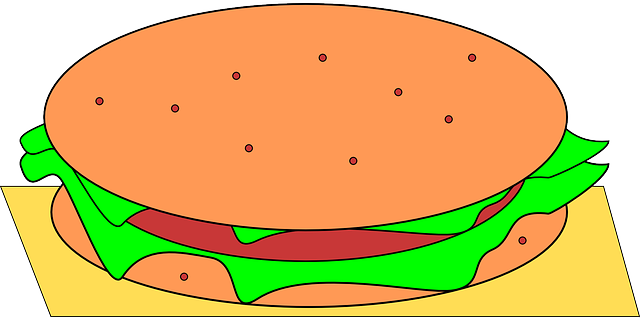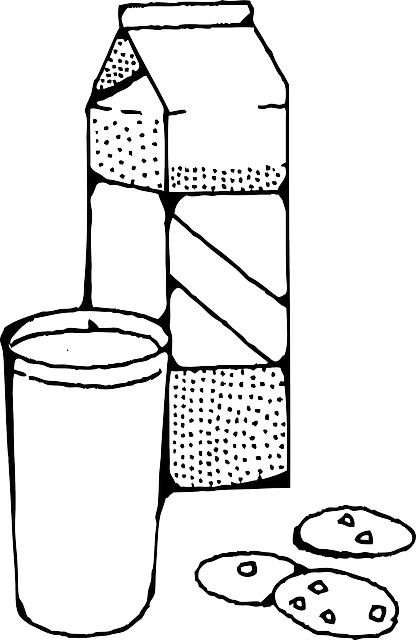يورانيوم مخصب
اليورانيوم المخصب Enriched uranium هونوع من اليورانيوم تـُرفـَع نسبة اليورانيوم-235 فيه من خلال عملية فصل النظائر. اليورانيوم الطبيعي (أوNU) هو99.284% النظير U, ومعه 235U يشكل فقط نحو0.711% من الوزن. إلا أن, 235U النظير الوحيد المتواجد في الطبيعة (بكمية يمكن تقديرها) الذي هوقابل للانشطار بواسطة نيوترونات حرارية.
اليورانيوم المخصب هومكون أساسي لكل من توليد الطاقة النووية السلمي والأسلحة النووية العسكرية. الوكالة الدولية للطاقة الذرية تعمل على مراقبة والتحكم في المعروض من اليورانيوم المخصب وعملياته ضمن جهودها لضمان أمان توليد الطاقة النووية وللحد من انتشار الأسلحة النووية.
قنابل المواد المخصبة تعبير عن نوع من الأسلحة النووية ويعتبر تحديدا من نوع الأسلحة النووية الإنشطارية ويتم تصنيعها على الأغلب من تخصيب مادتي اليورانيوم-235 أوالپلوتونيوم-239 ويعتبر الحصول على هذه المواد المخصبة من اصعب المراحل في بناء ترسانة نووية عملى سبيل المثال خصصت الولايات المتحدة 90% من الميزانية الأجمالية لبدايات مشروعها النووي للحصول على اليورانيوم المخصب. ويعتقد حتى الهند تمتلك هذا النوع من القنابل.
عملية التخصيب تعبير عن عزل نظائر عناصر كيميائية محددة Isotope separation من عنصر ما لغرض زيادة هجريز نظائر اخرى للحصول على مادة تعتبر مشبعة بالنظير المطلوب على سبيل المثال عزل نظائر معينة من اليورانيوم الطبيعي للحصول على اليورانيوم المخصب واليورانيوم المنضب. وتتم عملية التخصيب على مراحل حيث يتم في جميع فترة عزل كميات اكبر من النظائر الغير مرغوبة حيث يزداد العنصر تخصيبا بعد جميع فترة لحد الوصول إلى نسبة النقاء المطلوبة.
على سبيل المثال اليورانيوم المخصب تعبير عن يورانيوم تمت زيادة نسبة نظائر اليورانيوم-235 فيه وازالة النظائر الأخرى. وعملية التخصيب هذه صعبة ومكلفة وتكمن الصعوبة ان النظائر الذي يراد ازالتها من اليورانيوم شبيهة جدا من ناحية الوزن للنظائر الذي يرغب بالابقاء عليها وتخصيبها ويتم عملية التخصيب باستخدام الحرارة عبر سائل اوغاز لتساهم في عملية عزل النظائر الغير المرغوبة وهناك طرق اخرى اكثر تعقيدا كاستعمال الليزر أوالأشعة الكهرومغناطيسية.
وتبلغ نسبة اليورانيوم-235 الذي يراد تخصيبه من اجمالي ذرة اليورانيوم الطبيعي نسبة 0.7% فقط ولكن هذا الجزء هوالمرغوب فيه لكونه أخف من ناحية الكتلة من الأجزاء الأخرى من اليورانيوم الطبيعي . الجزء المتبقي من اليورانيوم الطبيعي بعد استخلاص جزء اليورانيوم-235 يسمى اليورانيوم-238 . تم تخصيب اليورانيوم لأول مرة في الولايات المتحدة بعد الحرب العالمية الثانية حيث تم بناء ثلاثة من المفاعلات النووية في ولايات تنسي واوهايووكنتكي وكانت الطريقة المستعملة تعبير عن ضخ كميات كبيرة من اليورانيوم على شكل غاز سادس فلوريد اليورانيوم uranium hexafluoride إلى حواجز ضخمة تحوي على ملايين الثقوب الصغيرة جدا وبهذه الطريقة يتم انتشار اليورانيوم-235 (وهوالجزء المطلوب) بسرعة اكبر نسبة إلى اليورانيوم-238 (وهوالجزء الغير مرغوب فيه لكونه اثقل) وتم استغلال الفرق في سرعة الأنتشار وجمع كميات هائلة من اليورانيوم-235 وتمتلك الولايات المتحدة يورانيوم مخصب من النوع العالي الخصوبة بنسبة 90%.
المستويات
هناك ثلاث مستويات من اليورانيوم المخصب:
- اليورانيوم ذوالخصوبة العالية Highly enriched uranium وتحتوي على 20% من اليورانيوم-235
- اليورانيوم ذوالخصوبة الواطئة Low-enriched uranium وتحتوي على اقل من 20% من اليورانيوم-235
- اليورانيوم ذوالخصوبة المحدودة Slightly enriched uranium وتحتوي على 0.9% إلى 2% من اليورانيوم-235 .
يورانيوم مخصب قليلاً (SEU)
Slightly enriched uranium (SEU) has a 235U concentration of 0.9% to 2%. This new grade can be used to replace natural uranium (NU) fuel in some heavy water reactors like the CANDU. Fuel designed with SEU could provide additional benefits such as safety improvements or operational flexibility, normally the benefits were considered in safety area while retaining the same operational envelope. Safety improvements could lower positive reactivity feedback such as reactivity void coefficient. Operational improvements would consist in increasing the fuel burnup allowing fuel costs reduction because less uranium and fewer bundles are needed to fuel the reactor. This in turn reduces the quantity of used fuel and its subsequent management costs.[]
يورانيوم معاد معالجته (RepU)
Reprocessed uranium (RepU) is a product of nuclear fuel cycles involving nuclear reprocessing of spent fuel. RepU recovered from light water reactor (LWR) spent fuel typically contains slightly more U-235 than natural uranium, and therefore could be used to fuel reactors that customarily use natural uranium as fuel, such as CANDU reactors. It also contains the undesirable isotope uranium-236 which undergoes neutron capture, wasting neutrons (and requiring higher U-235 enrichment) and creating neptunium-237 which would be one of the more mobile and troublesome radionuclides in deep geological repository disposal of nuclear waste.
يورانيوم منخفض التخصيب (LEU)
Low-enriched uranium (LEU) has a lower than 20% concentration of 235U. For use in commercial light water reactors (LWR), the most prevalent power reactors in the world, uranium is enriched to ثلاثة to 5% 235U. Fresh LEU used in research reactors is usually enriched 12% to 19.75% U-235, the latter concentration being used to replace HEU fuels when converting to LEU.
يورانيوم عالي التخصيب (HEU)
Highly enriched uranium (HEU) has a greater than 20% concentration of 235U or 233U. The fissile uranium in nuclear weapon primaries usually contains 85% or more of 235U known as weapon(s)-grade, though theoretically for an implosion design, a minimum of 20% could be sufficient (called weapon(s)-usable) although it would require hundreds of kilograms of material and "would not be practical to design"; even lower enrichment is hypothetically possible, but as the enrichment percentage decreases the critical mass for unmoderated fast neutrons rapidly increases, with for example, an infinite mass of 5.4% 235U being required. For criticality experiments, enrichment of uranium to over 97% has been accomplished.
The very first uranium bomb, Little Boy dropped by the الولايات المتحدة on Hiroshima in 1945, used 64 kilograms of 80% enriched uranium. Wrapping the weapon's fissile core in a neutron reflector (which is standard on all nuclear explosives) can dramatically reduce the critical mass. Because the core was surrounded by a good neutron reflector, at explosion it comprised almost 2.5 critical masses. Neutron reflectors, compressing the fissile core via implosion, fusion boosting, and "tamping", which slows the expansion of the fissioning core with inertia, allow nuclear weapon designs that use less than what would be one bare-sphere critical mass at normal density. The presence of too much of the 238U isotope inhibits the runaway nuclear chain reaction that is responsible for the weapon's power. The critical mass for 85% highly enriched uranium is about 50 kiloغرامs (1,800 أونصة), which at normal density would be a sphere about 17 centiمترs (0.56 قدم) in diameter.
Later US nuclear weapons usually use plutonium-239 in the primary stage, but the secondary stage which is compressed by the primary nuclear explosion often uses HEU with enrichment between 40% and 80% along with the fusion fuel lithium deuteride. For the secondary of a large nuclear weapon, the higher critical mass of less-enriched uranium can be an advantage as it allows the core at explosion time to contain a larger amount of fuel. The 238U is not fissile but still fissionable by fusion neutrons.
HEU is also used in fast neutron reactors, whose cores require about 20% or more of fissile material, as well as in naval reactors, where it often contains at least 50% 235U, but typically does not exceed 90%. The Fermi-1 commercial fast reactor prototype used HEU with 26.5% 235U. Significant quantities of HEU are used in the production of medical isotopes, for example molybdenum-99 for technetium-99m generators.
طرق التخصيب
Isotope separation is difficult because two isotopes of the same elements have very nearly identical chemical properties, and can only be separated gradually using small mass differences. (235U is only 1.26% lighter than 238U.) This problem is compounded by the fact that uranium is rarely separated in its atomic form, but instead as a compound (235UF6 is only 0.852% lighter than 238UF6.) A cascade of identical stages produces successively higher concentrations of 235U. Each stage passes a slightly more concentrated product to the next stage and returns a slightly less concentrated residue to the previous stage.
There are currently two generic commercial methods employed internationally for enrichment: الانتشار الغازي (الذي يشار إليه بأنه الجيل الأول) والطرد المركزي الغازي (الجيل الثاني) which consumes only 2% to 2.5% as much energy as gaseous diffusion, with centrifuges being at least a "factor of 20" more efficient. Later generation methods will become established because they will be more efficient in terms of the energy input for the same degree of enrichment and the next method of enrichment to be commercialized will be referred to as third generation. Some work is being done that would use nuclear resonance; however there is no reliable evidence that any nuclear resonance processes have been scaled up to production.
تقنيات الانتشار
الانتشار الغازي
Gaseous diffusion is a technology used to produce enriched uranium by forcing gaseous uranium hexafluoride (hex) through semi-permeable membranes. This produces a slight separation between the molecules containing 235U and 238U. Throughout the Cold War, gaseous diffusion played a major role as a uranium enrichment technique, and as of 2008 accounted for about 33% of enriched uranium production, but in 2011 was deemed an obsolete technology that is steadily being replaced by the later generations of technology as the diffusion plants reach their ends-of-life. In 2013, the Paducah facility in the US ceased operating, it was the last commercial 235U gaseous diffusion plant in the world.
الانتشار الحراري
Thermal diffusion utilizes the transfer of heat across a thin liquid or gas to accomplish isotope separation. The process exploits the fact that the lighter 235U gas molecules will diffuse toward a hot surface, and the heavier 238U gas molecules will diffuse toward a cold surface. The S-50 plant at Oak Ridge, Tennessee was used during الحرب العالمية الثانية to prepare feed material for the EMIS process. It was abandoned in favor of gaseous diffusion.
تقنيات الطرد المركزي
الطرد المركزي الغازي
The gas centrifuge process uses a large number of rotating cylinders in series and parallel formations. Each cylinder's rotation creates a strong centrifugal force so that the heavier gas molecules containing 238U move toward the outside of the cylinder and the lighter gas molecules rich in 235U collect closer to the center. It requires much less energy to achieve the same separation than the older gaseous diffusion process, which it has largely replaced and so is the current method of choice and is termed second generation. It has a separation factor per stage of 1.3 relative to gaseous diffusion of 1.005, which translates to about one-fiftieth of the energy requirements. Gas centrifuge techniques produce about 54% of the world's enriched uranium.
طرد زيپ المركزي
The Zippe centrifuge is an improvement on the standard gas centrifuge, the primary difference being the use of heat. The bottom of the rotating cylinder is heated, producing convection currents that move the 235U up the cylinder, where it can be collected by scoops. This improved centrifuge design is used commercially by Urenco to produce nuclear fuel and was used by Pakistan in their nuclear weapons program.
تقنيات الليزر
Laser processes promise lower energy inputs, lower capital costs and lower tails assays, hence significant economic advantages. Several laser processes have been investigated or are under development. Separation of Isotopes by Laser Excitation (SILEX) is well advanced and licensed for commercial operation in 2012.
فصل النظائر بليزر البخار الذري (AVLIS)
Atomic vapor laser isotope separation employs specially tuned lasers to separate isotopes of uranium using selective ionization of hyperfine transitions. The technique uses lasers which are tuned to frequencies that ionize 235U atoms and no others. The positively charged 235U ions are then attracted to a negatively charged plate and collected.
فصل النظائر بالليزر الجزيئي (MLIS)
Molecular laser isotope separation uses an infrared laser directed at , exciting molecules that contain a 235U atom. A second laser frees a fluorine atom, leaving uranium pentafluoride which then precipitates out of the gas.
فصل النظائر بإثارة الليزر (SILEX)
Separation of isotopes by laser excitation is an Australian development that also uses . After a protracted development process involving U.S. enrichment company USEC acquiring and then relinquishing commercialization rights to the technology, GE Hitachi Nuclear Energy (GEH) signed a commercialization agreement with Silex Systems in 2006. GEH has since built a demonstration test loop and announced plans to build an initial commercial facility. Details of the process are classified and restricted by intergovernmental agreements between United States, Australia, and the commercial entities. SILEX has been projected to be an order of magnitude more efficient than existing production techniques but again, the exact figure is classified. In August, 2011 Global Laser Enrichment, a subsidiary of GEH, applied to the U.S. Nuclear Regulatory Commission (NRC) for a permit to build a commercial plant. In September 2012, the NRC issued a license for GEH to build and operate a commercial SILEX enrichment plant, although the company had not yet decided whether the project would be profitable enough to begin construction, and despite concerns that the technology could contribute to nuclear proliferation.
تقنيات أخرى
العمليات الايروديناميكية
Aerodynamic enrichment processes include the Becker jet nozzle techniques developed by E. W. Becker and associates using the LIGA process and the vortex tube separation process. These aerodynamic separation processes depend upon diffusion driven by pressure gradients, as does the gas centrifuge. They in general have the disadvantage of requiring complex systems of cascading of individual separating elements to minimize energy consumption. In effect, aerodynamic processes can be considered as non-rotating centrifuges. Enhancement of the centrifugal forces is achieved by dilution of with hydrogen or helium as a carrier gas achieving a much higher flow velocity for the gas than could be obtained using pure uranium hexafluoride. The Uranium Enrichment Corporation of South Africa (UCOR) developed and deployed the continuous Helikon vortex separation cascade for high production rate low enrichment and the substantially different semi-batch Pelsakon low production rate high enrichment cascade both using a particular vortex tube separator design, and both embodied in industrial plant. A demonstration plant was built in Brazil by NUCLEI, a consortium led by Industrias Nucleares do Brasil that used the separation nozzle process. However all methods have high energy consumption and substantial requirements for removal of waste heat; none is currently still in use.
الفصل الكهرومغناطيسي للنظائر
In the electromagnetic isotope separation process (EMIS), metallic uranium is first vaporized, and then ionized to positively charged ions. The cations are then accelerated and subsequently deflected by magnetic fields onto their respective collection targets. A production-scale mass spectrometer named the Calutron was developed during World War II that provided some of the 235U used for the Little Boy nuclear bomb, which was dropped over Hiroshima in 1945. Properly the term 'Calutron' applies to a multistage device arranged in a large oval around a powerful electromagnet. Electromagnetic isotope separation has been largely abandoned in favour of more effective methods.
الطرق الكيميائية
One chemical process has been demonstrated to pilot plant stage but not used. The French CHEMEX process exploited a very slight difference in the two isotopes' propensity to change valency in oxidation/reduction, utilising immiscible aqueous and organic phases. An ion-exchange process was developed by the Asahi Chemical Company in Japan which applies similar chemistry but effects separation on a proprietary resin ion-exchange column.
فصل الپلازما
Plasma separation process (PSP) describes a technique that makes use of superconducting magnets and plasma physics. In this process, the principle of ion cyclotron resonance is used to selectively energize the 235U isotope in a plasma containing a mix of ions. The French developed their own version of PSP, which they called RCI. Funding for RCI was drastically reduced in 1986, and the program was suspended around 1990, although RCI is still used for stable isotope separation.
وحدة شغل الفصل
وحدة شغل الفصل Separative work unit (SWU) هي a function of the amount of uranium processed, the composition of the starting material, and the degree to which it is enriched; it is proportional to the total machine operation time required to achieve this, but is defined independent of the enrichment technology.
Separative work is expressed in SWUs, kg SW, or kg UTA (from the German Urantrennarbeit)
- 1 SWU = 1 kg SW = 1 kg UTA
- 1 kSWU = 1 tSW = 1 t UTA
- 1 MSWU = 1 ktSW = 1 kt UTA
The unit is strictly kilogram separative work unit, and is indicative of the energy used in enrichment, when feed, tails and product quantities are expressed in kilograms. The work necessary to separate a mass of feed of assay into a mass of product assay , and tails of mass and assay is expressed in terms of the number of separative work units needed, given by the expression
where
The feed to product ratio is given by the expression
whereas the tails to product ratio is given by the expression
عملى سبيل المثال, beginning with 100 kiloغرامs (3,500 أونصة) of NU, it takes about 61 SWU to produceعشرة kiloغرامs (350 أونصة) of LEU in 235U content to 4.5%, at a tails assay of 0.3%.
The number of separative work units provided by an enrichment facility is directly related to the amount of energy that the facility consumes. Modern gaseous diffusion plants typically require 2,400 to 2,500 kilowatt-hours (kW·h), or 8.6–9 gigajoules, (GJ) of electricity per SWU while gas centrifuge plants require just 50 to 60 kW·h (180–220 MJ) of electricity per SWU.
مثال:
A large nuclear power station with a net electrical capacity of 1300 MW requires about 25 tonnes per year (25 t/a) of LEU with a 235U concentration of 3.75%. This quantity is produced from about 210 t of NU using about 120 kSWU. An enrichment plant with a capacity of 1000 kSWU/a is, therefore, able to enrich the uranium needed to fuel about eight large nuclear power stations.
قضايا الثـَمـَن
المزج لدرجة أقل Downblending
The opposite of enriching is downblending; surplus HEU can be downblended to LEU to make it suitable for use in commercial nuclear fuel.
The HEU feedstock can contain unwanted uranium isotopes: U is a minor isotope contained in natural uranium; during the enrichment process, its concentration increases but remains well below 1%. High concentrations of U are a byproduct from irradiation in a reactor and may be contained in the HEU, depending on its manufacturing history. HEU reprocessed from nuclear weapons material production reactors (with an 235U assay of approx. 50%) may contain 236U concentrations as high as 25%, resulting in concentrations of approximately 1.5% in the blended LEU product. U is a neutron poison; therefore the actual 235U concentration in the LEU product must be raised accordingly to compensate for the presence of 236U.
The blendstock can be NU, or DU, however depending on feedstock quality, SEU at typically 1.5 wt% 235U may used as a blendstock to dilute the unwanted byproducts that may be contained in the HEU feed. Concentrations of these isotopes in the LEU product in some cases could exceed ASTM specifications for nuclear fuel, if NU, or DU were used. So, the HEU downblending generally cannot contribute to the waste management problem posed by the existing large stockpiles of depleted uranium.
A major downblending undertaking called the Megatons to Megawatts Program converts ex-Soviet weapons-grade HEU to fuel for U.S. commercial power reactors. From 1995 through mid-2005, 250 tonnes of high-enriched uranium (enough for 10,000 warheads) was recycled into low-enriched-uranium. The goal is to recycle 500 tonnes by 2013. The decommissioning programme of Russian nuclear warheads accounted for about 13% of total world requirement for enriched uranium leading up to 2008.
The United States Enrichment Corporation has been involved in the disposition of a portion of the 174.3 tonnes of highly enriched uranium (HEU) that the U.S. government declared as surplus military material in 1996. Through the U.S. HEU Downblending Program, this HEU material, taken primarily from dismantled U.S. nuclear warheads, was recycled into low-enriched uranium (LEU) fuel, used by nuclear power plants to generate electricity.
- A uranium downblending calculator designed by the WISE Uranium Project
انظر أيضاً
- Areva
- قائمة منطقات الليزر
- MOX fuel
- Nuclear fuel bank
- الطاقة النووية
- سوق اليورانيوم
- تعدين اليورانيوم
المصادر
- ^ Alexander Glaser (6 November 2005). "About the Enrichment Limit for Research Reactor Conversion : Why 20%?". Princeton University. Retrieved on 18 April 2014.
- ^ Forsberg, C. W.; Hopper, C. M.; Richter, J. L.; Vantine, H. C. (March 1998). "Definition of Weapons-Usable Uranium-233" (PDF). ORNL/TM-13517. Oak Ridge National Laboratories. Retrieved 30 October 2013.
- ^ Sublette, Carey (4 October 1996). "Nuclear Weapons FAQ, Section 4.1.7.1: Nuclear Design Principles – Highly Enriched Uranium". Nuclear Weapons FAQ. Retrieved 2 October 2010.
-
^ Mosteller, R.D. (1994). "Detailed Reanalysis of a Benchmark Critical Experiment: Water-Reflected Enriched-Uranium Sphere" (PDF). Los Alamos technical paper (LA–UR–93–4097): 2. Retrieved 19 December 2007.
The enrichment of the pin and of one of the hemispheres was 97.67 w/o, while the enrichment of the other hemisphere was 97.68 w/o.
- ^ "Nuclear Weapons FAQ". Nuclearweaponarchive.org. Retrieved 26 January 2013.
- ^ Frank N. Von Hippel, Laura H. Kahn (December 2006). "Feasibility of Eliminating the Use of Highly Enriched Uranium in the Production of Medical Radioisotopes". Science & Global Security. 14 (2 & 3): 151–162. doi:10.1080/08929880600993071. Retrieved 26 March 2010.
- ^ http://www.world-nuclear.org/info/Nuclear-Fuel-Cycle/Conversion-Enrichment-and-Fabrication/Uranium-Enrichment/#.UWrver-IRAs
- ^ of centrifuge units than diffusion units. This disadvantage, however, is outweighed by the considerably lower (by a factor of 20) energy consumption per SWU for the gas centrifuge]
- ^ "Lodge Partners Mid-Cap Conference 11 April 2008" (PDF). Silex Ltd. 11 April 2008.
- ^ Rod Adams (24 May 2011). "McConnell asks DOE to keep using 60 year old enrichment plant to save jobs". Atomic Insights. Retrieved 26 January 2013.
- ^ ".
- ^ F. J. Duarte and L.W. Hillman (Eds.), Dye Laser Principles (Academic, New York, 1990) Chapter 9.
- ^ [1][][]
- ^ "GE Hitachi Nuclear Energy Selects Wilmington, N.C. as Site for Potential Commercial Uranium Enrichment Facility". Business Wire. 30 April 2008. Retrieved 30 September 2012.
- ^ Broad, William J. (20 August 2011). "Laser Advances in Nuclear Fuel Stir Terror Fear". The New York Times. Retrieved 21 August 2011.
- ^ New York Times, Uranium Plant Using Laser Technology Wins U.S. Approval, September 2012
- ^ Smith, Michael; Jackson A G M (2000). "Dr". S a Institution of Chemical Engineers – Conference 2000: 280–289.
- ^ [2][]
انظر أيضاً
- استخراج اليورانيوم
- سوق اليورانيوم
- Nuclear reprocessing
- United States Enrichment Corporation
- دورة الوقود النووي
- طاقة نووية
- Eurodif—European Gaseous Diffusion Uranium Enrichment Consortium
- Urenco Group
مصادر خارجية
- اليورانيوم من الموسوعة العربية العالمية
- by Allan S. Krass, Peter Boskma, Boelie Elzen and Wim A. Smit, 296 pp., Published for SIPRI by Taylor and Francis Ltd, London, 1983
- Silex Systems Ltd
- Nuclear Issues Briefing Paper 33
- Overview and history of U.S. HEU production
- News Resource on Uranium Enrichment



























